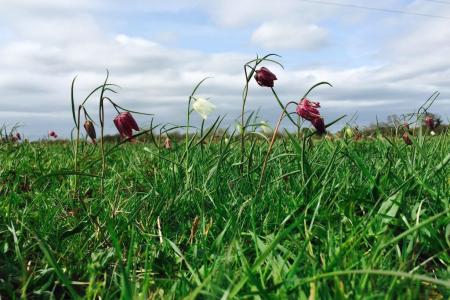Biodiversity
One of the oldest challenges in ecology is to understand the processes that underpin the composition of communities. Unravelling the complexities of the distribution, abundances and interactions between species requires novel approaches. Together with taxonomy, ecological experiments and observations, we develop mathematical and statistical approaches for integrating different facets (traits, phylogeny, systematics, dynamics) of species interactions and biodiversity.
Community & phylogenetic diversity
Feedbacks between ecology and evolutionary biology are fundamental. These feedbacks aim to explain community assemblages both in terms of the biological traits of the species and their evolutionary history. Studies of real communities attempted to differentiate the factors associated with past evolutionary history from recent ecological processes factors related to ecological processes. By developing a richer understanding of the factors that underline community assembly is a prerequisite in ensuring we can predict future changes in biological diversity. In this context, we are interested in the development of mathematical methodologies that aim to describe, analyse, and explain both patterns in trait diversity and patterns in phylogenetic diversity across space and through time.
Dung beetle biodiversity
Understanding rapid adaptive radiations is central in linking ecology and evolutionary biology. Integrating phylogenetics, systematics, biogeography, and ecology are central to biodiversity of species groups. Building on our work on community phylogenetics we are currently investigating the systematics and ecology of the Indo-Malayan members of the Catharsius genus of dung beetles.
Indirect Interactions
Populations interact in diverse ways beyond directly consuming each other. We are working towards understanding how these indirect effects play a role in structuring natural communities and in determining population dynamics through experiments and theoretical work.
Selected publications
Pavoine S. and M.B. Bonsall (2011) Measuring biodiversity to explain community assembly : a unified approach. Biological Reviews 86, 792-812. http://dx.doi.org/10.1111/j.1469-185X.2010.00171.x
Pavoine S., E.Vela, S. Gachet, G. de Bélair and M.B. Bonsall (2011) Linking patterns in phylogeny, traits, abiotic variables and space: a novel approach to linking environmental filtering and plant community assembly. Journal of Ecology 99, 165-175. http://dx.doi.org/10.1111/j.1365-2745.2010.01743.x
Pavoine S., M. Baguette and M.B. Bonsall (2010) Decomposition of trait diversity among the nodes of a phylogenetic tree. Ecological Monographs 80, 485-507. http://dx.doi.org/10.1890/09-1290.1
Pavoine S. and M.B. Bonsall (2009) Biological diversity: distinct distributions can lead to the maximization of Rao’s quadratic entropy. Theoretical Population Biology 75, 153-163. http://dx.doi.org/10.1016/j.tpb.2009.01.008
Pavoine S., M. Love and M. Bonsall (2009) Hierarchical partitioning of evolutionary and ecological patterns in the organization of phylogenetically-structured species assemblages: application to rockfish (genus: Sebastes) in the Southern California Bight. Ecology Letters 12, 898-908. http://dx.doi.org/10.1111/j.1461-0248.2009.01344.x


